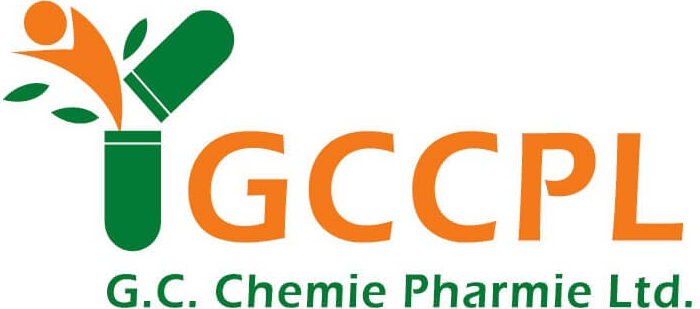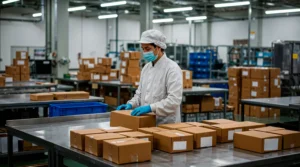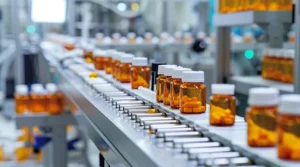Overview of India’s Pharma Industry in 2025
for growth as it prepares to welcome a future of possibilities and promises.
The Indian pharmaceutical industry, which leads the world and ranks third in volume, is known for producing high-quality medicines at reasonable prices.
Due to new pharma regulatory frameworks and higher compliance requirements introduced in 2025, Indian pharma companies must gear up for change.
These changes in Indian pharma regulations and practices are aimed at enhancing safety and international competitiveness in standards, as well as elevating the quality and reputation of the standards for pharma products manufactured by the Indian government.
There is much excitement among the representatives in the said sector as they look forward to the higher percentage of 9‐11% growth in the Indian Pharmaceutical sector during the current fiscal year.
Impact on Drug Manufacturing Standards and Processes
A strong quality culture and regulatory compliance are more important than ever as India works to establish itself in the biologics industry. Although the industry has made significant progress in meeting global demand—it now supplies 60% of vaccines and nearly 40% of generics worldwide—sustainable expansion depends on resolving ongoing regulatory compliance issues under evolving Indian pharma regulations.
To guarantee the potency of the active components and the quality and purity of the finished goods, pharmaceutical manufacturers must meet strict requirements. To ensure that patients receive safe and also effective products, regulatory bodies enforce these criteria. Because even minor modifications to the formula might have significant effects on patients, the controls and checks are stricter than those in the food business.
Professionals and patients require that every batch of medication be manufactured with a high degree of precision and safety, because it is nearly impossible for a medical or pharmacy professional, let alone the consumer, to determine whether a product is safe or contains what it is supposed to.
Third-party pharma manufacturers India need to maintain a uniform, high-quality standard for their products to build trust and confidence.
How API Manufacturing in India is Affected
India’s pharmaceutical sector, often called the ‘pharmacy of the world,’ is supplying the developed world with generic medicines and producing more than 50% of the world’s vaccines. However, the sector is facing some issues, especially the 70%-80% dependence on the Chinese Active Pharmaceutical Ingredients (API’s). It is leading to a state of vulnerability in the sector within the supply chain, as evidenced during the COVID-19 pandemic.
Further, the sector is facing international price pressures, intellectual property issues, infrastructure constraints, and severe international regulatory compliance pressures.
To strengthen the sector, the Pharma API Manufacturers in India must work alongside the policymakers to diversify API sources, build their own manufacturing capacity, raise quality standards, invest in R&D, and promote fair intellectual property laws that protect innovation and ensure the affordability of medicines, thereby fortifying the industry.
Challenges Faced by Manufacturers During Implementation
The path is obvious, but putting it into practice is not painless. As regulatory requirements increase, many manufacturers—particularly the smaller and mid-sized ones—face formidable challenges. Among the main obstacles are:
- Regulatory compliance: One of the most significant issues facing pharmaceutical firms today is regulatory compliance. Every nation has different requirements and guidelines for approving drugs. The European Medicines Agency (EMA) and U.S. Food and Drug. Administration (FDA) functions differently, and growing markets can provide an additional level of complexity. With evolving Indian pharma regulations, pharmaceutical companies find it challenging to navigate a maze of constantly shifting rules when introducing a medicine to the global market.
- Supply chain management: We anticipate that the medications we require will be available when we visit a doctor or a hospital. We find it difficult to comprehend that a hospital might tell a patient they are unavailable because of logistical issues in the pharmaceutical industry in India, or that they must postpone treatment due to a medication shortage.
- Environmental and regulatory barriers: Tighter pollution and effluent regulations delay production and incur additional expenses for API makers. It also puts pressure on third-party pharma manufacturers in India to strictly adhere to environmental and quality norms.
- Technological Innovation and Integration: Automation, artificial intelligence (AI), machine learning, and continuous manufacturing have driven a technological revolution in the pharmaceutical sector. These technologies offer better quality, lower costs, and more efficiency.
- Workforce Issues: Professionals with expertise in fields like biotechnology, data analytics, and regulatory affairs are in limited supply in the business. This disparity may hamper innovation and operational effectiveness.
Opportunities Emerging from the New Regulatory Landscape
Despite the challenges, the designed framework provides several exciting opportunities. These can be classified into several categories:
- The exponential nature of Artificial Intelligence: Some of the benefits include revolutionized decision-making and labor processes. Benefits include improved forecasts, prompt decisions, and better outcomes.
- Enhanced credibility and branding: Adherence to the new rules would improve the standing of Indian pharmaceutical companies in the international arena, thereby enhancing export opportunities and collaborative arrangements.
- Self-reliance in APIs and growth in exports: India can reduce its dependency on imports and increase its share of the global Pharma API market by developing its pharmaceutical API manufacturers. It will also strengthen the local pharmaceutical industry’s upstream supply system.
- Rapidly improving knowledge of human biological systems: This has been driven by the data available and the processing capabilities employed. A better understanding of risk factors, new treatment avenues, and the potential for groundbreaking medications will be made possible by this greater comprehension.
- Quality-led differentiation: Indian companies can leverage compliance to differentiate themselves in a market where overseas customers are more focused on reliability and quality than on price. So, the new Indian Pharma Regulations usher in a new era of value-added manufacturing, improved global integration, and increased competitiveness that goes beyond compliance and cost.
Government Support and Future Outlook
Given its rapid expansion, the Indian government has set the seemingly unattainable goal of having the country’s economy reach $30 trillion to $35 trillion by 2047. The considerable worldwide reach of its pharmaceutical industry is a critical element of this growth strategy. It presently has the distinction of being the fifth-largest contributor to India’s manufacturing GVA, augments the livelihoods of a significant number of people, and provides a healthy trade surplus.
The acceleration of Indian pharmaceutical production has increased significantly during the twenty-first century. Moreover, the Indian CDMO business has not only soared but exploded, with a vast 18% Compound Annual Growth Rate (CAGR), thereby tripling in size from 2019 to 2023 to an estimated present size of $20 billion.
This kind of expansion underscores the very significance of the industry within India’s broader pharmaceutical sector, which currently accounts for a significant share of the world’s generic drugs and vaccines. India’s ambitious India@100 strategy, which aims to generate $450 billion in pharmaceutical market sales by 2047, depends heavily on this growth trajectory.
Conclusion
The structure of supply chains, the manufacture of medicines, and India’s image as a supplier in overseas markets are changing as a result of the 2025 chapter in the Indian pharma regulations.
Just as significant as the essence of the journey are the opportunities for smaller businesses to come to terms with the substantial investment, infrastructure, and regulatory exposure involved. The companies that adapt and also invest in supply-chain transparency, quality systems, and compliance will be able to access international markets more effectively, secure higher-yielding contracts, and maintain competitiveness.





